Fallingwater: Iconic American House
May 12, 2025

Leaving Philadelphia and driving west across the state of Pennsylvania, I was excited with anticipation. I was on my way to see the most beautiful and iconic house I had ever seen a picture of: the house of Falling Water.
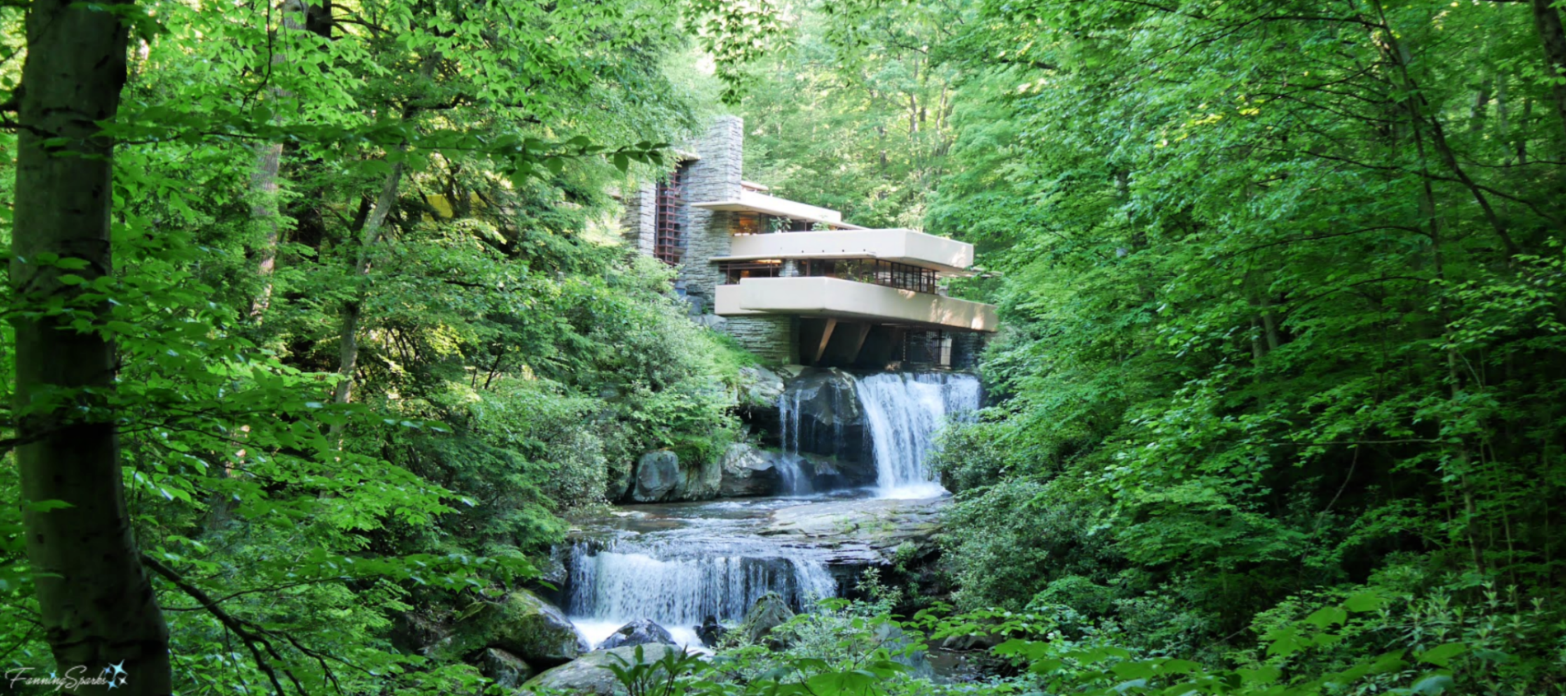
FallingWater, as it is officially known, is arguably the most iconic house in America.
Frank Lloyd Wright was born in rural Wisconsin. His family were Unitarians, a Nature focused religion. During his architectural education at the University of Wisconsin, he became enamored with Transcendentalism including Emerson and Thoreau and their deep love of Nature.
Following graduation, he moved to Chicago and served a 5-year apprenticeship under Louis Sullivan. Upon completing his apprenticeship, Wright opened his own practice. Over the next 14 years, he developed the Prairie home. These projects were popular. Wright had a successful architectural practice.
In the late teens and early 1920’s, Wright designed some impressive projects in Japan including the Imperial Hotel in Tokyo.
In the early 1920’s, Wright developed his Textile Concrete Block system and designed and built a number of homes and buildings in Southern California starting with the Millard House in Pasadena, California. Wright thrived throughout the 1920’s until the Great Depression.
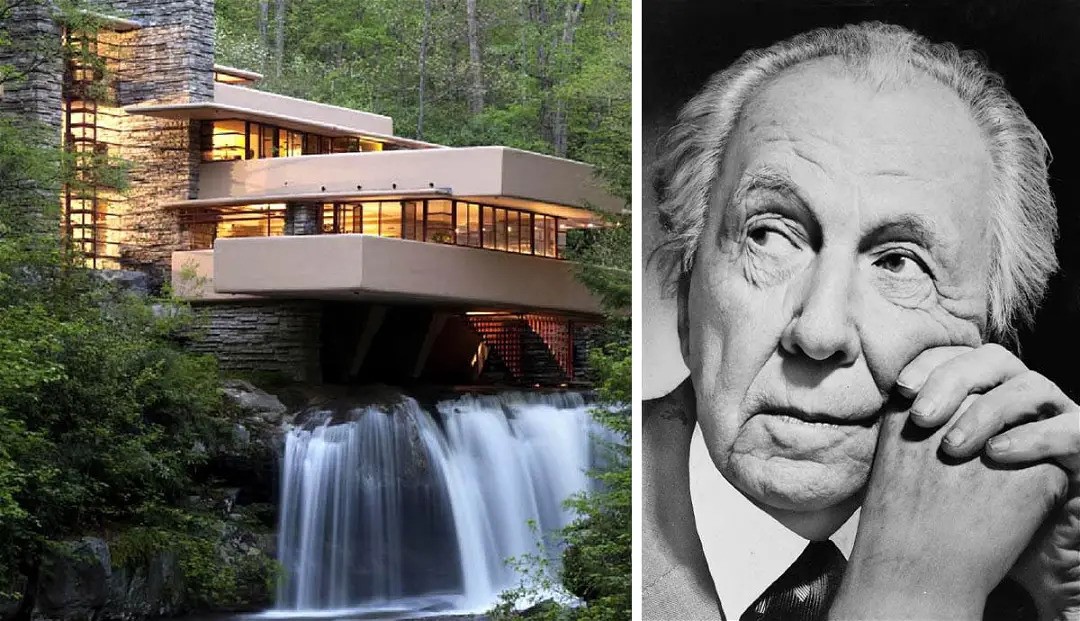
During the Great Depression, America’s greatest architect Frank Lloyd Wright’s business was struggling for lack of commissions. Fortunately, one of the apprentices he trained, Edgar J. Kaufmann, Jr., had a very successful father who owned and ran the highly successful department store chain Kaufmann’s. The father, Edgar J. Kaufmann, owned 1,500 beautiful acres in the woods about an hour and a half drive from his flagship store in Pittsburgh. He wanted to build a custom weekend home. The son got Wright and his father together. They hit it off. This was 1934.
Together, Wright and Kaufman visited the site. In the lush woods was a picturesque waterfall. Kaufmann wanted a house with a great view of the waterfall. The site was ideal for Wright’s organic architecture which integrated the site, the house and the owner’s lifestyle. So, Wright put the house on top of the boulders and the waterfall. Kaufmann, upset at first with Wright’s vision, soon fell in love with the idea.
The project was difficult and expensive. But by its completion in 1937, Wright had created an architectural masterpiece: Fallingwater.
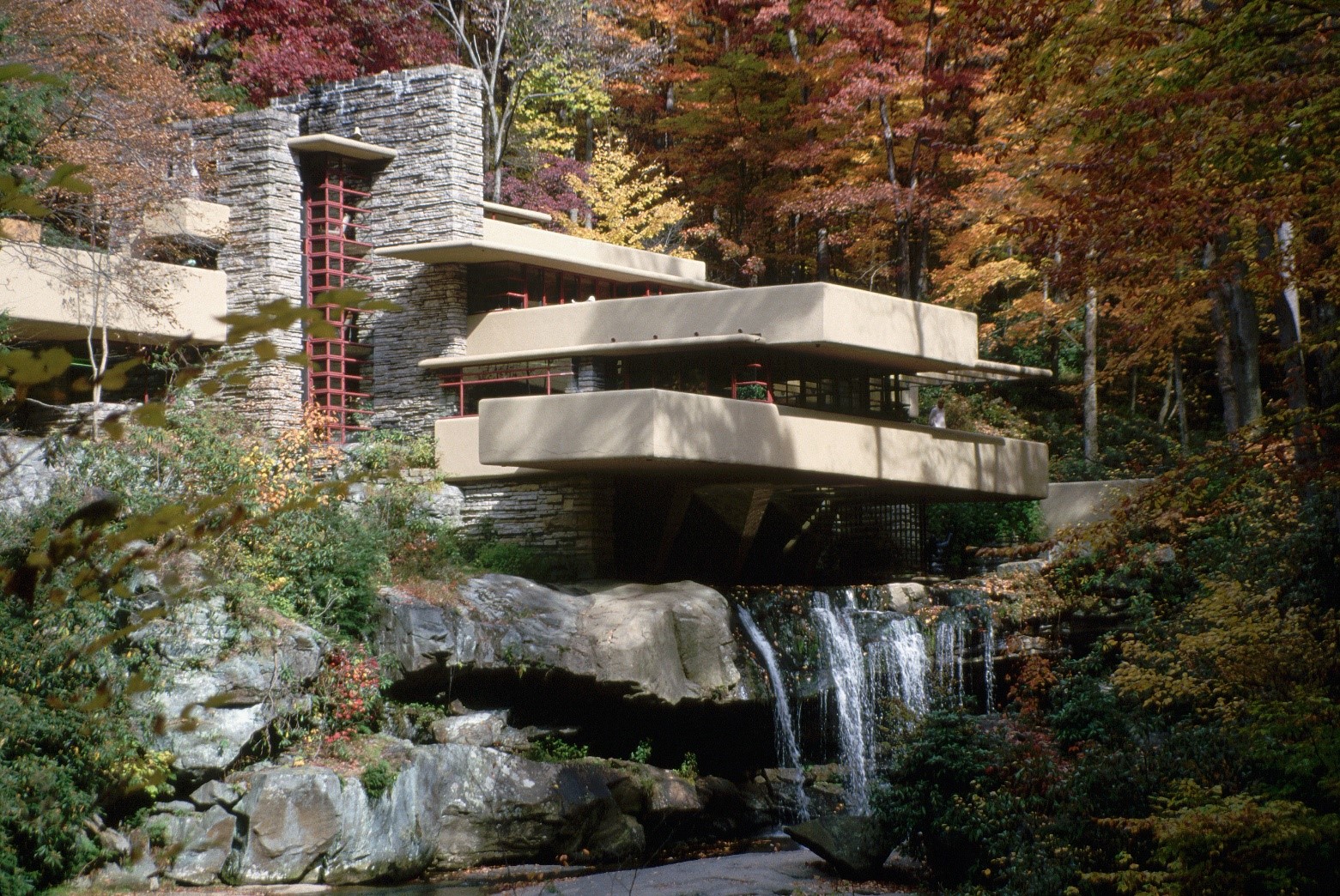
When I toured the house in the fall of 1964, the hardwoods were in late fall color. Photographs do not do this magnificent project justice. It was way beyond even my sky-high expectations. My first impression was that the house had grown out of the site it is so perfectly integrated – the epitome of organic architecture.

As I toured the interior of the house, which was flooded with warm natural light, the living room / hearth area was classic Frank Lloyd Wright open space design. The floor of the living room / hearth area is native stone. And the many windows brought nature right into the house. Inside and outside were one. As part of the ambience of the house the natural rhythmic sound of the waterfall was ever present. And at various places throughout the house, the huge boulders upon which the house is built, are integrated right into the house. A classic example is where large chunks of the native boulders are an integral part of the hearth.
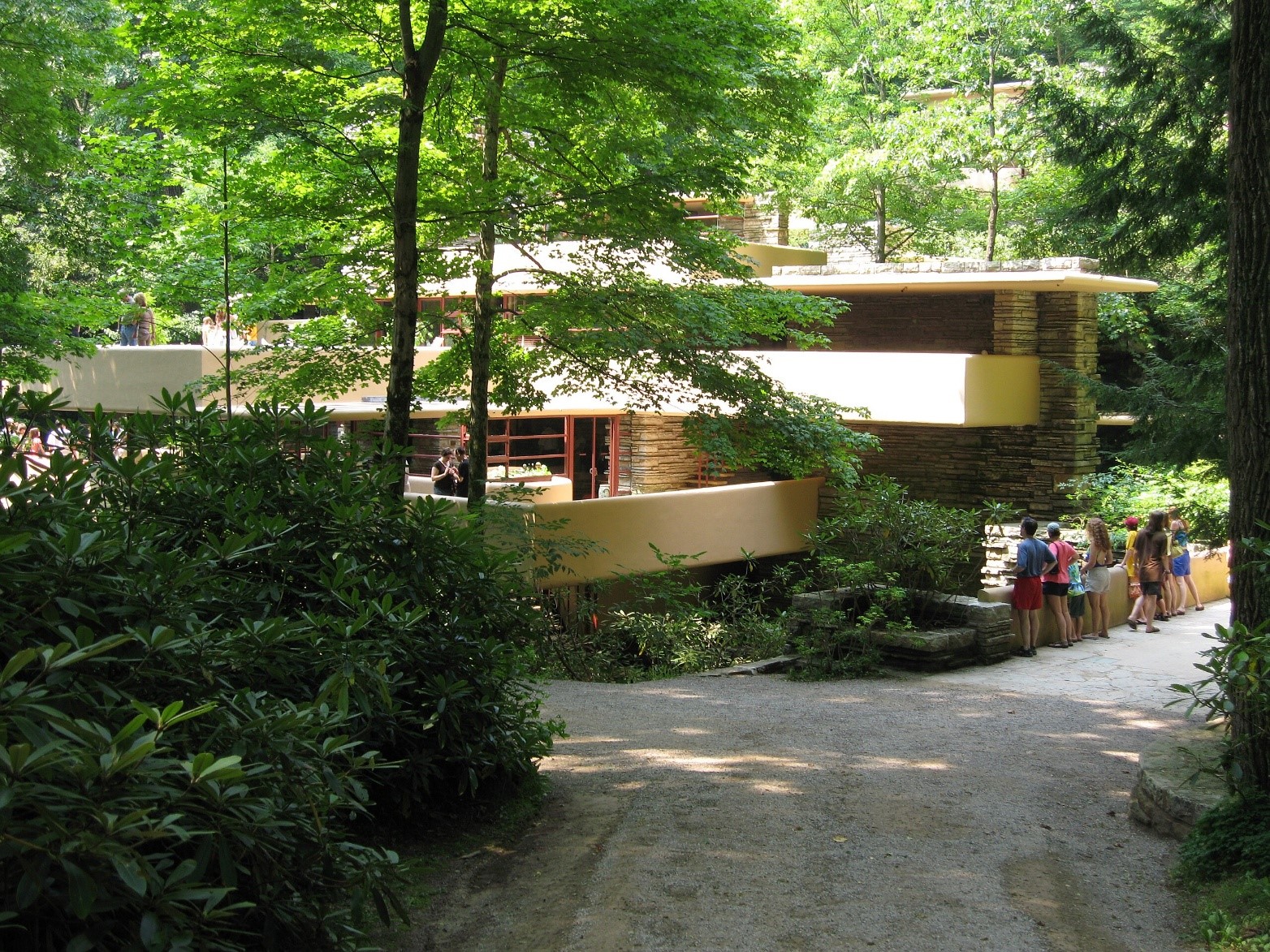
At various points, terraces project out into the woods, again further integrating house and natural world. The interior of the house smells fresh and clean. The atmosphere along with the sound of the waterfall creates an almost Zen-like space: calm, peaceful, yet energizing, all at the same time. The interior space is simple and yet complex.
The interior is a combination of unique spaces which all flow seamlessly into and through each other – an organic, synergistic whole. As the sun moves, light creates an infinite tapestry of constantly changing patterns.
Frank Lloyd Wright clearly had a genius for synthesizing a complex array of elements into a pleasing harmony. Fallingwater is stunningly and complexly beautiful inside and out.
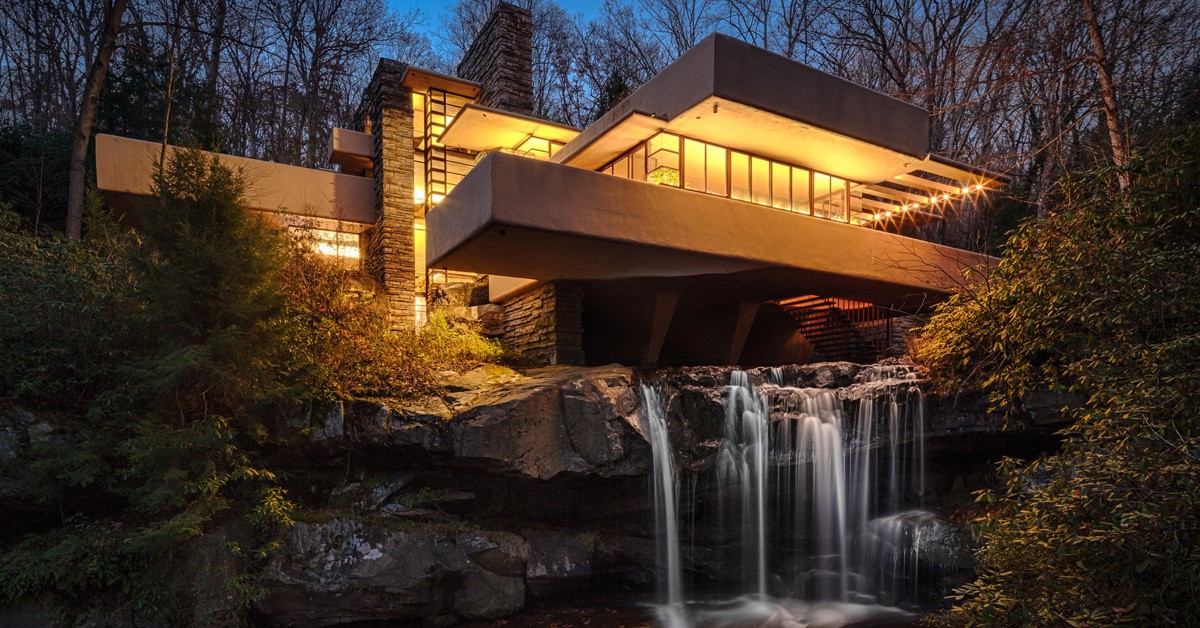
I stayed until the tour guide finally pushed me out the door. In the reddening dusk, the house showed yet another side as I walked back toward my car.
I had never experienced such a complexly beautiful house in my life. I can see why it is a World Heritage site and one of the most iconic homes in the world.
I had dreamed of some day seeing Fallingwater but was never sure I would ever get the chance. The experience of Fallingwater is one of the most deeply satisfying cultural experiences in my life – to this day. I subsequently read Frank Lloyd Wright’s autobiography. A big book, nearly 600 pages, not counting notes, beautifully written and a fascinating story, it was a pleasure to read.
I walked away from Fallingwater in a pensive mood, feeling grateful yet again that I had taken this trip and got to have another profound experience. As Bob Dylan said, we are here to create something. Clearly Frank Lloyd Wright created a masterpiece that has and will continue to feed the souls of those ready students. At that moment, I was feeling deeply nourished.
My goal is to create, nourish and encourage optimally healthy human beings in mind, body and spirit.
The foundation is high quality nutrition like a JDD shake to feed your amazing brain and the brains and bodies of your family. Wishing you profoundly enriching experiences with the clarity to fully appreciate them. Whether it’s Fallingwater or an awesome sunset from my condo overlooking the Pacific Ocean, at 80 I feel extremely fortunate to be fully alive, wide awake, and clear as a bell.
Wishing you and your family the very best life has to offer.
Joe
 Cart (0)
Cart (0)

